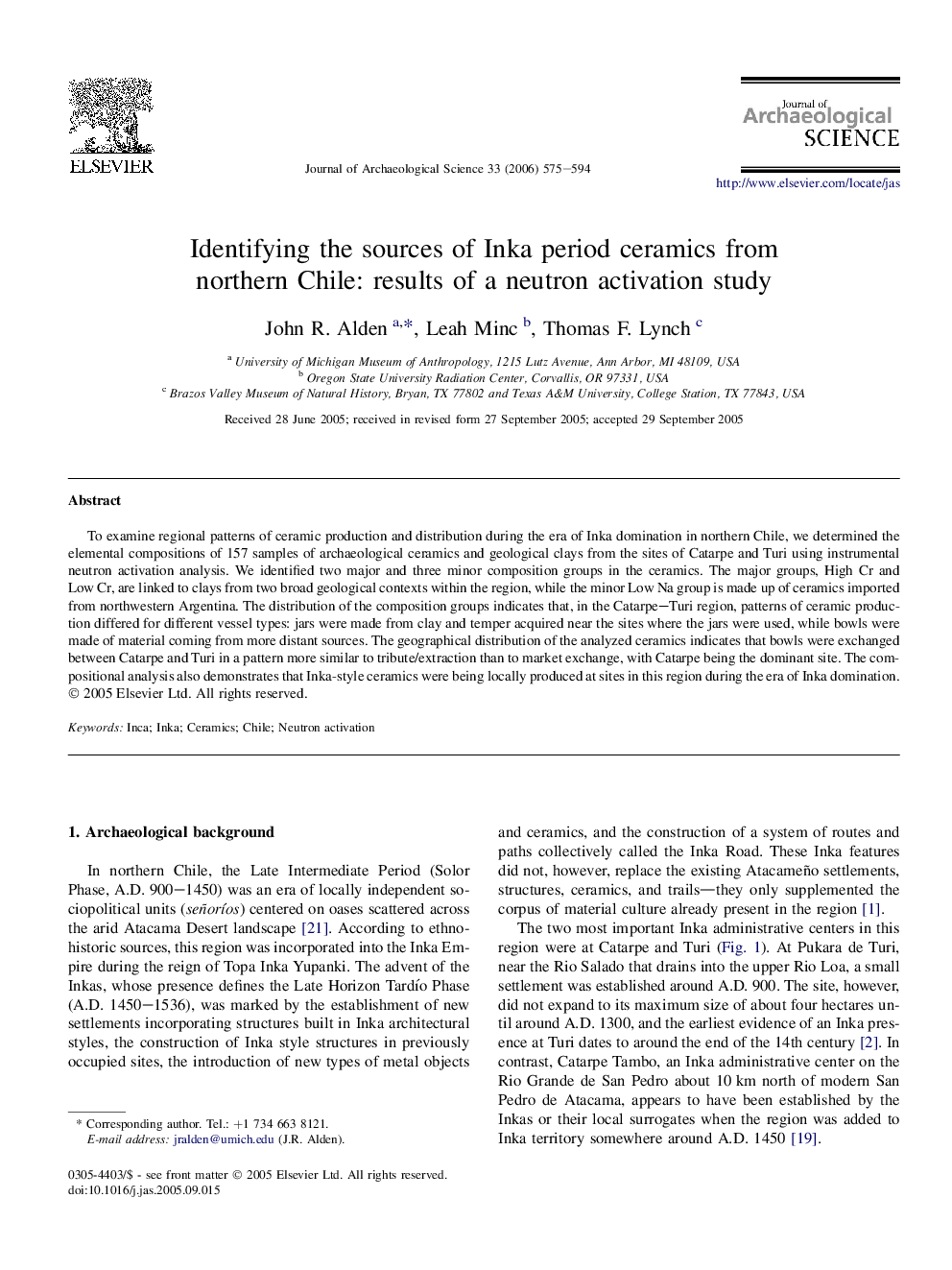| Article ID | Journal | Published Year | Pages | File Type |
|---|---|---|---|---|
| 1037665 | Journal of Archaeological Science | 2006 | 20 Pages |
Abstract
To examine regional patterns of ceramic production and distribution during the era of Inka domination in northern Chile, we determined the elemental compositions of 157 samples of archaeological ceramics and geological clays from the sites of Catarpe and Turi using instrumental neutron activation analysis. We identified two major and three minor composition groups in the ceramics. The major groups, High Cr and Low Cr, are linked to clays from two broad geological contexts within the region, while the minor Low Na group is made up of ceramics imported from northwestern Argentina. The distribution of the composition groups indicates that, in the Catarpe-Turi region, patterns of ceramic production differed for different vessel types: jars were made from clay and temper acquired near the sites where the jars were used, while bowls were made of material coming from more distant sources. The geographical distribution of the analyzed ceramics indicates that bowls were exchanged between Catarpe and Turi in a pattern more similar to tribute/extraction than to market exchange, with Catarpe being the dominant site. The compositional analysis also demonstrates that Inka-style ceramics were being locally produced at sites in this region during the era of Inka domination.
Related Topics
Physical Sciences and Engineering
Materials Science
Materials Science (General)
Authors
John R. Alden, Leah Minc, Thomas F. Lynch,
